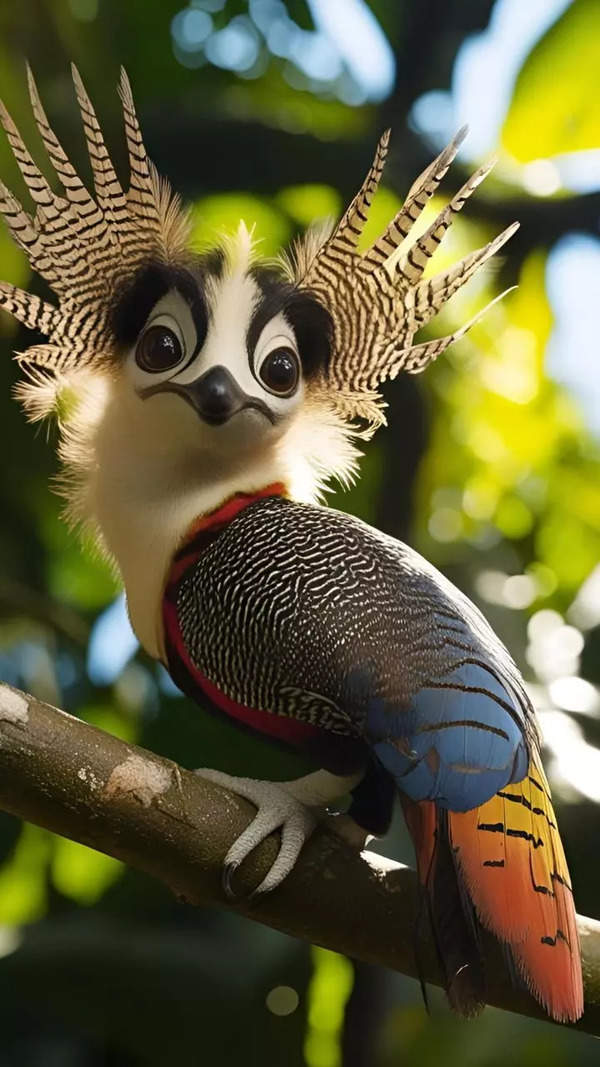- News
- India News
- Times Evoke News
- ‘Small fireflies light up entire forests with their glow — but they perish facing artificial lights’
Trending
This story is from July 22, 2023
‘Small fireflies light up entire forests with their glow — but they perish facing artificial lights’
Natural history filmmaker Sriram Murali is a member of the IUCN SSC Firefly Specialist Group. Speaking to Srijana Mitra Das at Times Evoke, he discusses the enigmas — and risks — around fireflies:
What is the core of your work?
I raise awareness about the night sky, the wonders of the dark and species therein like fireflies. Through short films and a feature documentary, I’ve discussed light pollution.
Some years ago, visiting my hometown in Tamil Nadu from the US, I began travelling. The farther I went from the city, the more fireflies I saw. I found thousands sparkling at the edge of the Anamalai Tiger Reserve — I was fascinated. Reserve officers told me about groves filled with their light. I began working with the officials and discovered ranges of forests with billions of fireflies, synchronising their light across trees. They transformed entire forests, their glow lighting up every direction.

Is there a special monsoon dimension to firefly bioluminescence?
Yes — fireflies, in their larval, pupal and adult stages, need moisture for metamorphoses. In Maharashtra and parts of Gujarat, this season starts in June. It begins in April in the Western Ghats, some weeks before the monsoon actually. The first rains are very heavy but they change the forest — the trees become very green, the leaves grow larger and firefly larvae start feeding overground (they eat earthworms, snails, slugs and leeches) and become adults. They then wait for days with afternoon rains to lay eggs. Interestingly, if the seasonal rains are slightly delayed, they hold their particular phase of life and go to the next stage only when the environmental conditions are right. Earth being wet is crucial as their prey emerges then and the habitat grows welcoming.
Is climate change affecting these established patterns now?
Yes — once they become adults, fireflies have only a ten-to-fourteen-day window to display their lights and mate. With climate change though, the rains have become so heavy or unpredictable that fireflies aren’t able to come out, glow, attract mates and proliferate. We are seeing a decline in their population in some forest ranges. Last year, there were excessive rains in this area — this year, there have been very high summer temperatures and it’s rained just a couple of days, the trees remaining dry. Last year also brought unusual winds. Synchronous fireflies have rhythms of light which they repeat through the night but gusts stopped their pattern and a gale blew many out of their trees.

What are the impacts of artificial lighting used by humans on these species?
Fireflies glow to communicate, signalling particularly to find a mate. Hence, a dark environment is very important for them but with bright lights around, the females can’t see the males glowing. Coupling declines and soon, the entire group perishes. We’ve seen this happen across suburban areas. Researchers worldwide have studied the reactions of various species to artificial light — turtles, for instance, have been found to be immune to red and amber light. Conducting similar experiments in Anamalai, we found fireflies here aren’t affected by red light but exposed to white light, they cannot function. They immediately seek cover — this impacts their synchronisation and communication. The change to white LED lighting has also severely impacted fireflies which weren’t so hampered by the old orange sodium vapour lights.

Does every firefly have a distinctive glow — and how do you distinguish between such small species?
Global research has found each species does have its own typical light pattern — in Anamalai though, we’ve seen every tree housing them displaying special patterns, some glowing outwards, some inwards, sideways, etc. The same species showed diverse lighting formations. This is being studied now. There are over 2,000 firefly species worldwide. They are recognised via taxonomy and morphology or the study of shapes, sizes and structures and differences in these. We also do DNA sequencing. We’ve collaborated with the National Centre for Biological Sciences and are working now with the government’s Advanced Institute for Wildlife Conservation.

How can people appreciate the beauty of fireflies without disturbing them?
There are very few places outside protected sites where fireflies can even be seen anymore — Anamalai has them because it’s a tiger reserve and no one is allowed in at night. Some locations conduct firefly tourism. But to do this sustainably, we must respect their habitat as their space, not ours. Using bright torchlights is very harmful to them. So is walking around their trees as they pupate there. People should also not use insect repellents, pesticides and insecticides in such habitats — these decimate fireflies which hurts farmers too as the larvae eat agricultural pests. Also, don’t visit firefly habitats in large groups and avoid the increasingly disturbing trends of camping grounds, bonfires and parties held near their areas. These are fantastic beings of nature — we should offer them our appreciation very quietly.

Stay updated with the latest India news, weather forecast for major cities like Delhi, Mumbai, Noida, and Bengaluru on Times of India.
End of Article
FOLLOW US ON SOCIAL MEDIA








